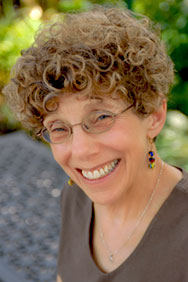Sorting Out the Different Forms of Life
 July 6, 2009
July 6, 2009 During the last third of the 20th century, biologists sorted life into five kingdoms. These were Animalia, Plantae, Fungi, Protista, and Monera. We’re all familiar with animals, plants, and fungi, but what are protista and monera? Protista are all the one-celled creatures whose cells contain a nucleus, and Monera are all the one-celled creatures whose cells do not contain a nucleus.
One problem with this system of categorizing living things is that it is a human system, based more on what humans see than on what is actually true about the living organisms. For instance, four of the kingdoms, animals, plants, fungi, and protists, consist of creatures made of eukaryotic cells, that is, cells with a nucleus. Yet these are grouped as if they were as different from one another as all of them are from the monerans.
For a long time, the members of monera were thought to be “bacteria and blue-green algae.” Eventually, researchers realized that those “blue-green algae” were actually photosynthetic bacteria. So actually, Kingdom Monera should simply have been called “Kingdom Bacteria.” But then, in the late 1970’s, a biologist named Carl Woese announced a startling discovery. He had compared RNA from a number of different living types and had found that Monera actually contained two quite different forms of life.
Woese called the two forms of monerans “eubacteria” and “archaebacteria.” Furthermore, Woese could show that the eukaryiotic forms of life were more closely related to the archebacteria than to the eubacteria. Woese proposed that above the “Kingdom” category in the hierarchy of life forms, there should be a “Domain” category. The Domains would be Eubacteria, Archebacteria, and Eukarya, with Archebacteria and Eukarya closer together than to Eubacteria.
For quite a long time, the rest of the biological community disbelieved and actively ostracized Woese. But now his domains are accepted and taught as a regular part of biology courses. The names of the Domains have been shortened to Bacteria, Archaea, and Eukarya. Further research has turned up intriguing similarities between eukarya and bacteria, and between eukarya and archaea. Obviously, clues about the evolution of eukaryotic cells provide plenty of work for evolutionary biologists!
Woese, Carl R. and Fox, George E. PNAS, 11/1/77, vol. 74, #11, pp. 5088-90.

